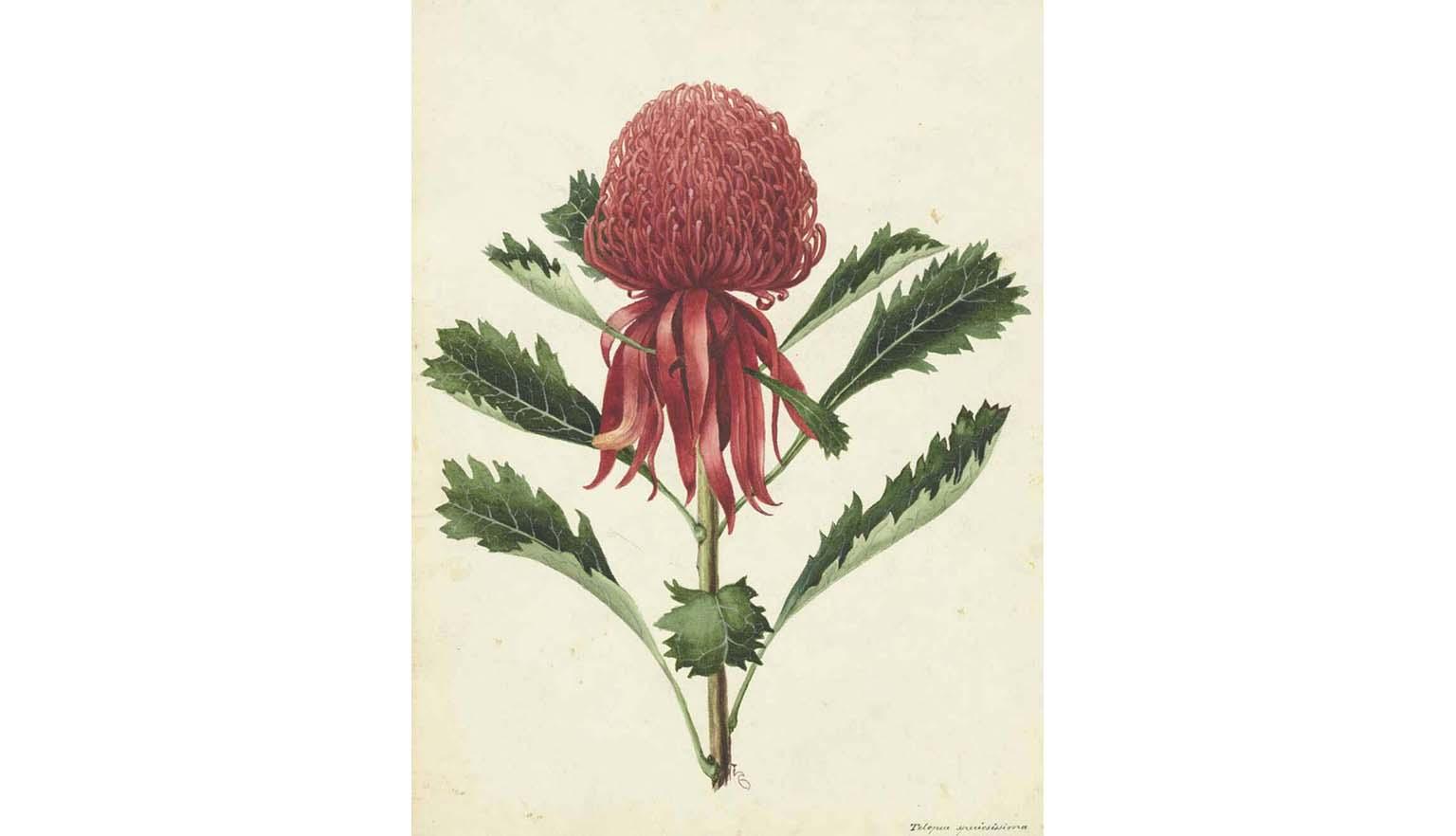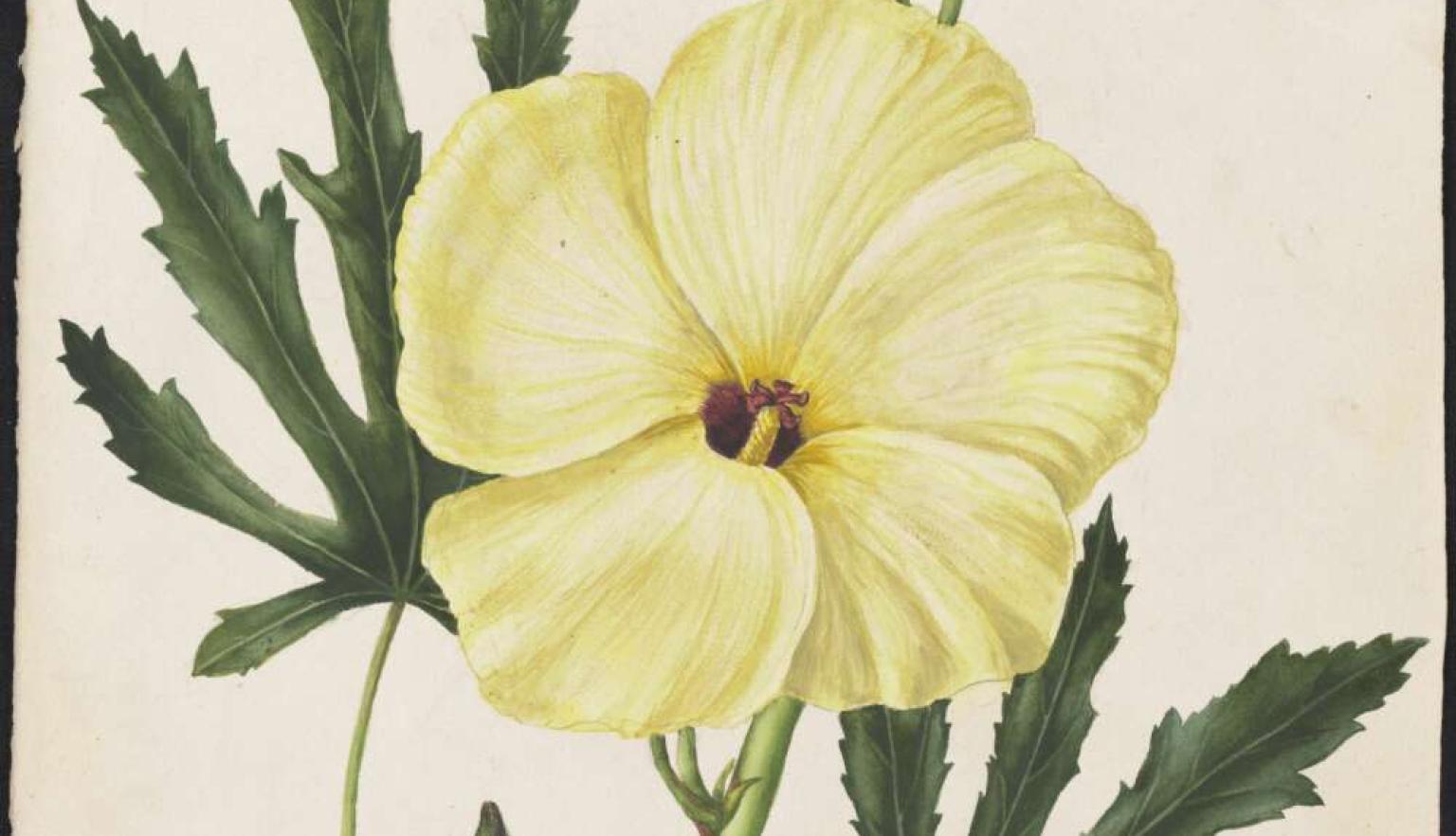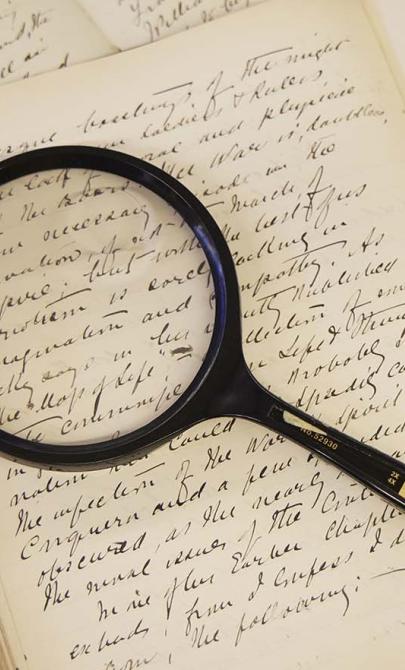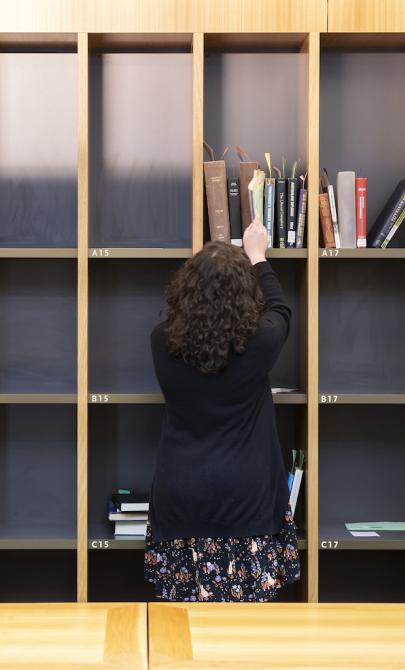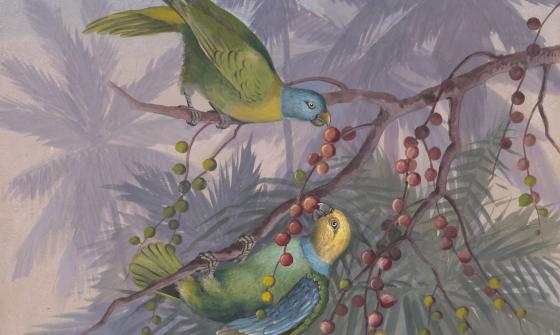Forster Collection
Collection higlights
Key items in the collection
The collection comprises 911 watercolours of Australian flowers, painted between 1916 and 1927. Most were created in Sydney and nearby regions such as Goulburn and the Shoalhaven River.
The inscriptions were mostly written by staff of the NSW Herbarium, who considered that the paintings combined artistic merit with a high degree of botanical accuracy. Other botanists have stated that, as botanical illustrations, the Adam Forster Collection is superior to the Ellis Rowan Collection.
The collection represents a wide variety of flower genera, including but not limited to:
- Acacia
- Angophora
- Banksia
- Boronia
- Brachychiton
- Brachycome
- Caladenia
- Callistemon
- Clianthus
- Comesperma
- Correa
- Dendrobium
- Diuris
- Epacris
- Eriostemon
- Eucalyptus
- Eugenia
- Goodenia
- Grevillea
- Hakea
- Helichrysum
- Hibbertia
- Hibiscus
- Leptospermum
- Leucopogon
- Lobelia
- Melaleuca
- Olearia
- Persoonia
- Prostanthera
- Pterostylis
- Pultenaea
- Sarcochilus
- Solanum
- Swainsona
- Telopea
- Tetratheca
- Thelymitra
- Xerotes
About Adam Forster
Carl August von Wiarda (1852–1928), known as Adam Forster in Australia, was a botanist and artist whose life spanned Prussia, South Africa and Australia.
Early life and migration
Born in East Prussia and raised in Emden, Forster’s father was both a lawyer and portrait painter. After attending military school and serving in the Franco–Prussian War (1870) as part of the Prussian Horse Guard, Carl abandoned his commission and moved to South Africa to work as an accountant. In 1888, he emigrated to Australia aboard the Cutty Sark, adopting the name Adam Forster. He left his family behind initially to establish himself in his new home.
Career in pharmacy administration
Forster was appointed the first secretary of the NSW Pharmacy Board in 1897, a role he held until retirement in 1920. He was also the inaugural secretary of the Pharmaceutical Association of New South Wales.
Botanical pursuits and artistic work
A passionate botanist and member of the NSW Naturalists’ Society, Forster began travelling widely from about 1915, collecting wildflowers and painting watercolours. Publisher George Robertson commissioned him to illustrate a work on Australian wildflowers, and by the time of his death, Forster had completed 248 small watercolours. Although the initial publication was shelved due to the academic nature of the text by Edwin Cheel, Forster’s paintings were later featured in Wild Flowers of Australia (1938), with text by Thistle Harris.
Legacy and personality
Thistle Harris and naturalist David Stead, both acquaintances of Forster, remembered him for his enthusiasm and tireless bushwalking expeditions in search of rare plants. Harris recalled his vigor and determination in the field, describing him as “virile and active as a schoolboy,” joyfully discovering new species on arduous treks through the Australian bush.
Background to the collection
The Adam Forster Collection was purchased in 1949 from Elsa McGregor, the daughter of Forster.
The Adam Forster Collection is held in the Pictures collection (R789-1705). All the paintings have been individually catalogued and digitised.
This guide was prepared using these references:
- Christobel Mattingley, A brilliant touch: Adam Forster's wildflower paintings, Canberra, National Library of Australia, 2010.
- Christobel Mattingley, From Prussian Army Officer to Australian Wild Flower Painter, National Library of Australia News, vol. 15 (5), February 2005, pp. 15–18.
- Obituary of Adam Forster, Sydney Morning Herald, 12 April 1928, p. 13.
- David G Stead, Adam Forster: An Appreciation, Sydney Morning Herald, 13 April 1928, p. 12.
